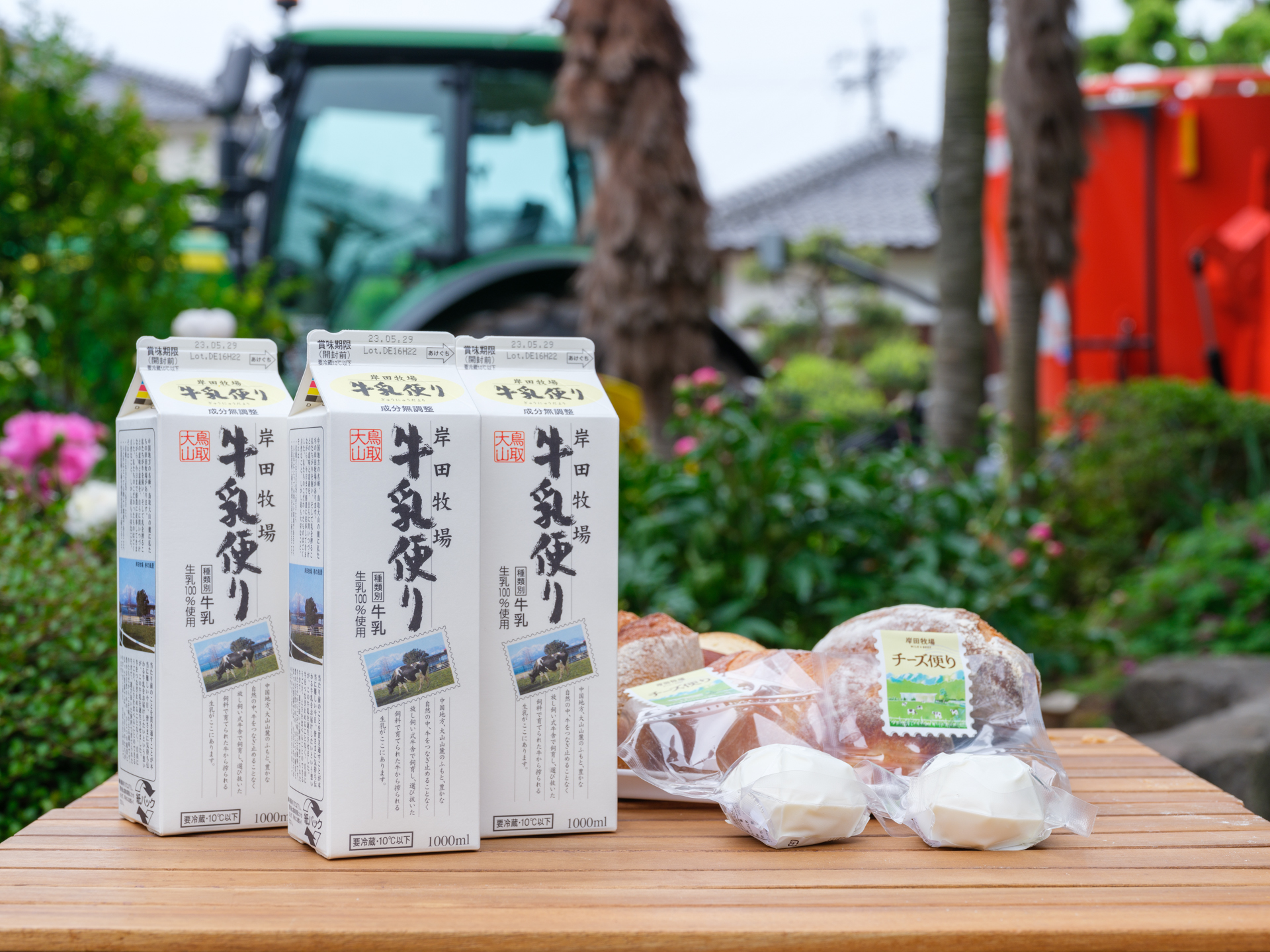We want to deliver not only the delicious taste, but also the producer’s thoughts. Kishida Farm’s “milk letter” was born from this desire. The taste, made by blending different varieties of milk, is loved by local residents and restaurants. What is the challenge of Mr. Tokuyuki Tanaka of Kishida Farm in pursuit of the lives of cows and ideal milk?
Cows raised on land rich in the blessings of Mt.
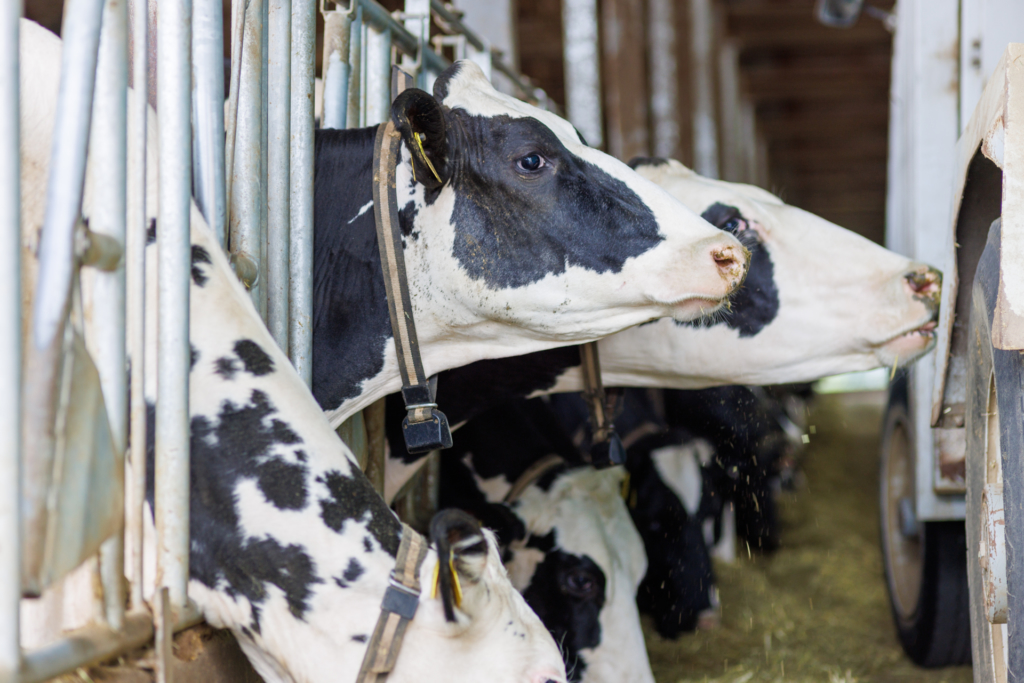
The town of Kotoura in Tottori Prefecture, where Kishida Farm is located, is surrounded by the Sea of Japan to the north and Mount Daisen, the highest mountain in the Chugoku region, to the south, and is rich in nature. The black box soil, made from volcanic ash from Mt. Daisen, has excellent water retention and permeability, making it suitable for growing crops and pasture grass. The town is also blessed with abundant subsoil water from Mt. Daisen, making it an ideal environment for livestock farming.
About 80 years ago, Mr. Tanaka’s grandfather settled here as a postwar settlement. He cleared the trees, raised a few cows, and cultivated the fields. Later, Mr. Tanaka’s father steered the business toward a single cow operation, and it took its present form. Kishida” is the maiden name of Mr. Tanaka’s father’s side, and he still carries on the name “Kishida Farm.
Since the breeds and methods of raising dairy and beef cattle differ greatly, it is common for ranches to raise only one or the other. On farms that raise only dairy cattle, male calves are often sold or disposed of. However, Kishida Ranch engages in combined dairy and beef management, raising male calves as beef cattle and shipping them out on their own. The company takes care of all calves born on its own ranch, which shows its commitment as a “cattle specialist. In addition, the compost made from the cattle’s manure is used by local farmers, aiming for recycling-oriented agriculture throughout the entire community.
Stress-free environment for cows
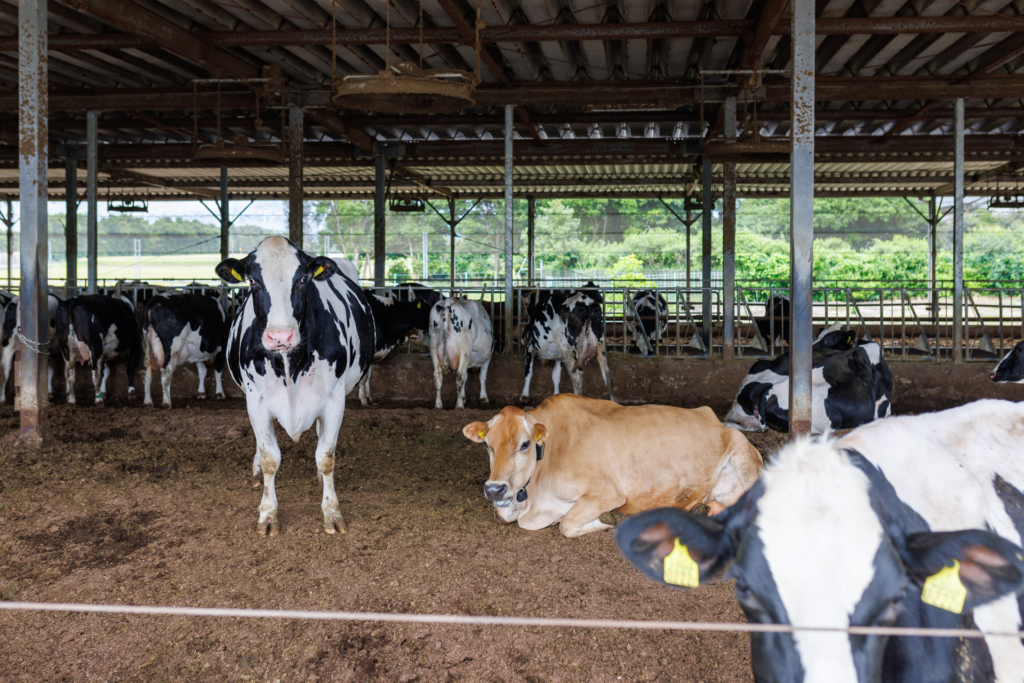
On this spacious site, about 260 dairy cows and 800 beef cows, a total of 1,060 head of cattle, live in a relaxed and comfortable environment. In order to create a “natural” environment where each cow can spend her time in her favorite place, free-range barns are used. It is impressive to see the cows roaming freely in the barn.
The cows may look like they are just lounging around, but it takes a lot of work to produce 30 liters of milk every day. I want to let them rest when they can and feed them when they want. That is why we mix various kinds of feeds so that they get a good nutritional balance when they eat one,” he says.
He is meticulous about managing the health of his cows, changing their feed according to the day’s temperature, weather, humidity, and wind direction.
Milk that not only tastes good but also delivers feelings
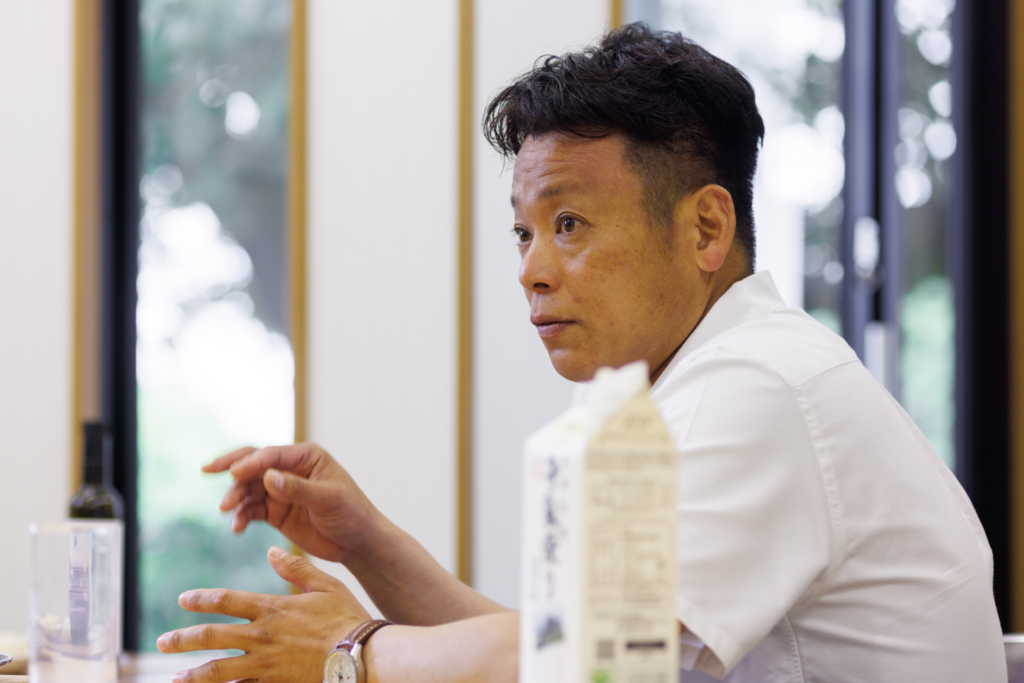
Kishida Ranch began selling its own milk in 2001. Milk Bulletin”-this is the name of the milk sold at Kishida Farm. We want to deliver not only the milk, but also the thoughts of the cowshed. I named it after the image of customers who are waiting for this milk to arrive, just like a letter arrives in the mail. Since then, the milk delivery service has been supported by about 500 private homes and 100 restaurants.
Mr. Tanaka’s idea of good-tasting milk is milk that is rich in content but not too rich, and has a refreshing taste. It does not have the distinctive smell of cow’s milk, and many customers say they can drink Kishida Farm’s milk.
Whenever I open the refrigerator, this milk is always there,” says one customer. I want my children to drink it, and when I become a parent, I will give it to my own children. We want to create a brand that is not limited by price or quantity,” says Tanaka.
Blended milk according to the golden ratio
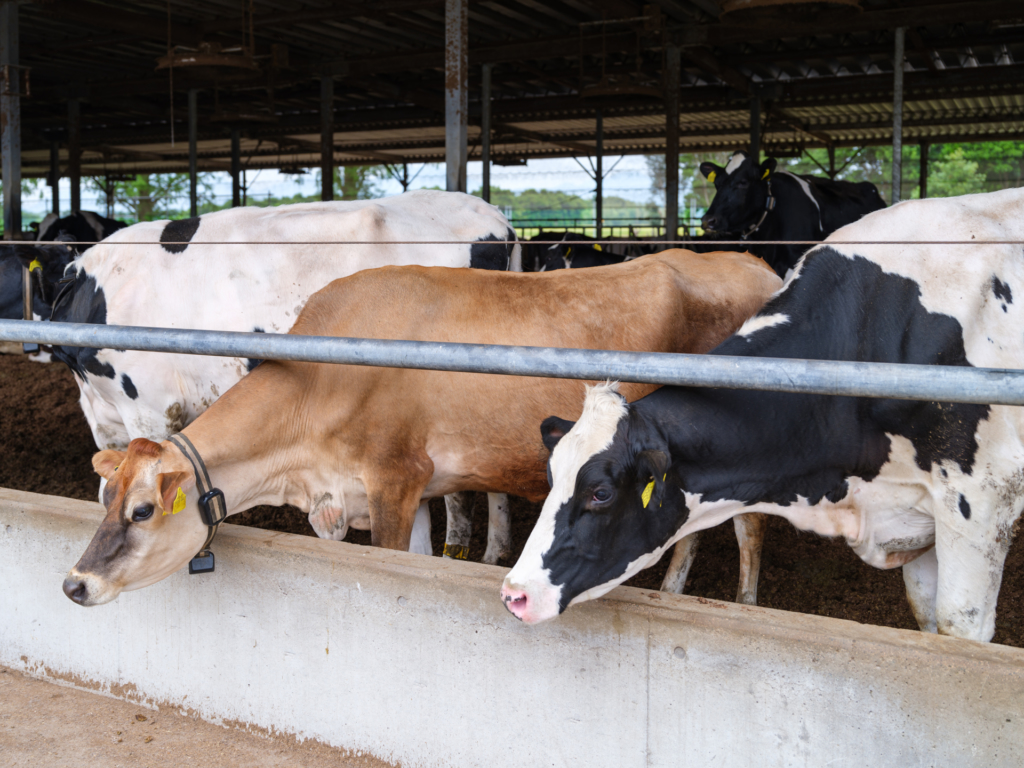
While many farms keep only one type of cow, we asked Mr. Tanaka why he keeps two types of cows.
He said, “Ninety percent Holstein and 10 percent Jersey is the golden ratio for me. I was told by a friend who blends milk, and when I tried mixing the two, it was better than one type of milk. Since then, I have been making blended milk according to my own golden ratio.
Based on the data from the cows he has raised, he has gradually learned what kind of milk quality he can produce. In order to create the ideal flavor, he selects cows with the necessary milk quality and strives to keep the flavor of the milk in the milk delivery. What he is particularly conscious of is flavor. The aroma of the milk itself and the aroma of the milk as it passes down the throat, etc., are all being studied at universities as they continue their pursuit of the ideal flavor.
Difficulties and rewards of in-house sales
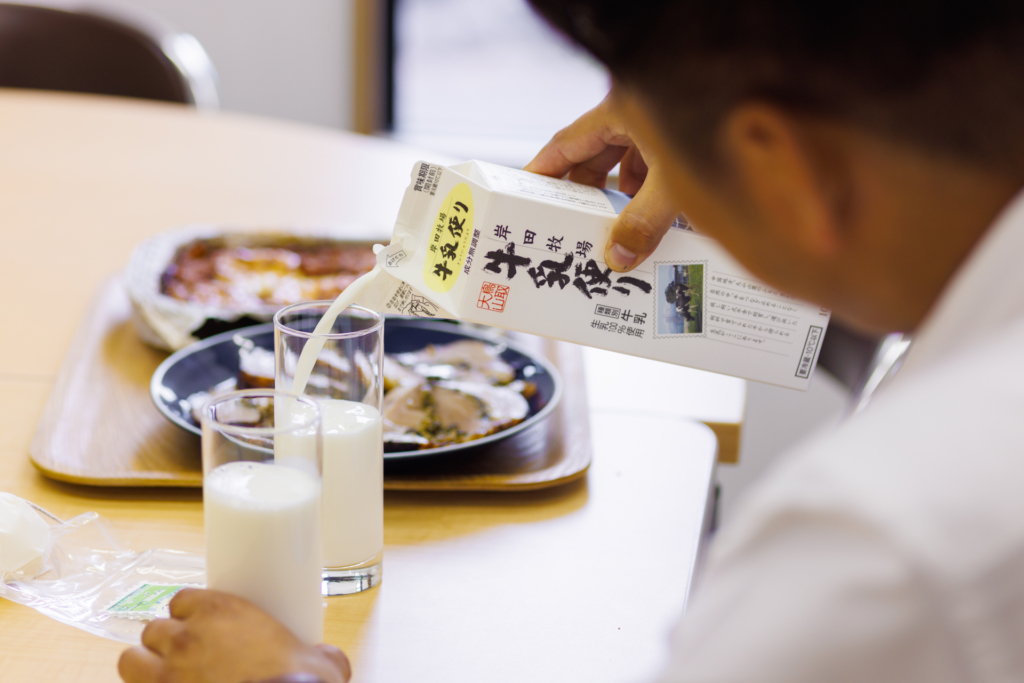
Before selling milk newsletters, they shipped milk to factories. Since they started selling their own milk, they have changed their mindset dramatically. We receive money from customers to evaluate our milk. The evaluation of whether the milk tastes good or not comes directly from the customer. I keenly felt that it was the work of a cow farmer, something I would not have thought anything of if I had just left the milk at the factory,” he said.
At the same time, the answer is not only about how good the milk tastes. What you are doing may or may not be right. What direction should I take and what should be my goal? He is searching for answers as he works day after day.
Freshness is the name of the game: “Cheese Delivery”.
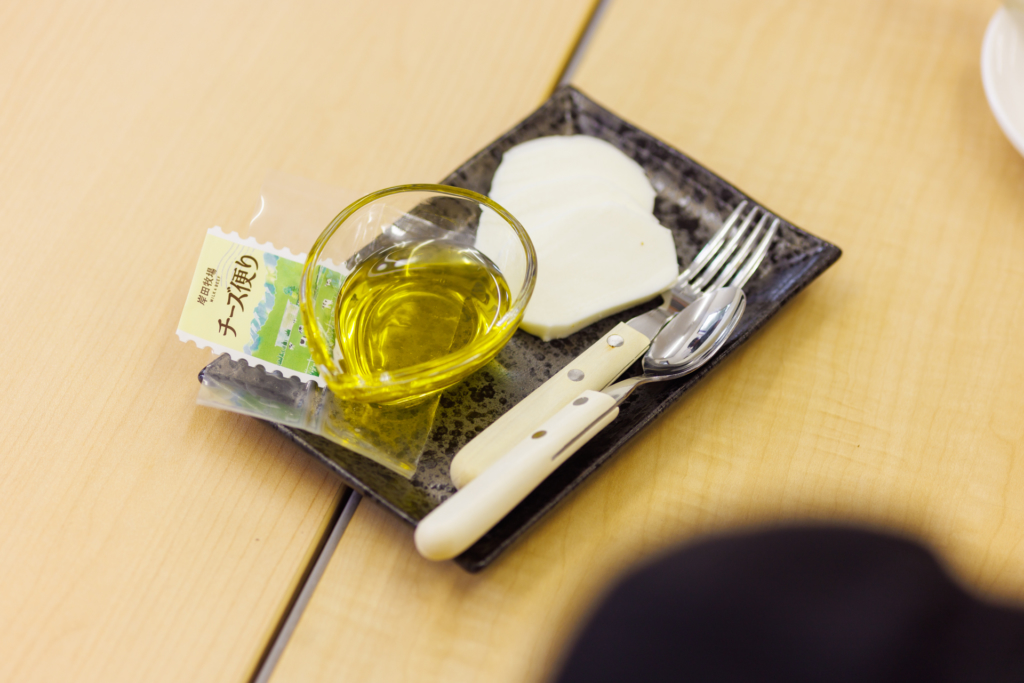
In addition to milk delivery, the company’s other product is mozzarella cheese.
The milk is squeezed in the morning and made into cheese on the same day, without using any refrigeration or brine. Therefore, the cheese is fresh and made to order. The cheese is named “Cheese Delivery” in the same way as the milk delivery service, as the company wants to deliver the feelings of the cheese makers as well. Currently, they only offer mozzarella cheese, but they plan to add fresh cheese to their lineup in the future.
The driving force behind the Oyama Project
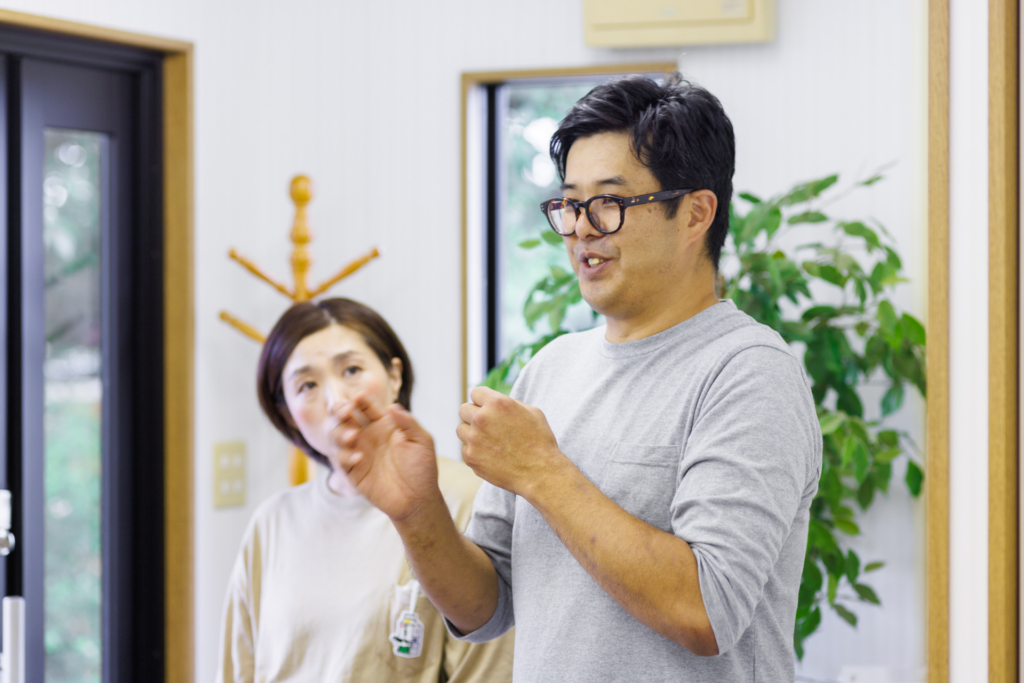
In fact, it is not only milk and cheese that Mr. Tanaka makes. He is also a wheat producer.
In 2010, a project was launched to grow locally produced wheat in the area at the foot of Mt. The name of the project is “Daisen Komugi Project. The project was initiated by Mr. Izui, a baker who sources milk from the area. I want to make bread with locally grown wheat. I wanted to create something that not only tasted good, but also had meaning because it was made from local wheat,” says Izui.
However, wheat is a plant that originally prefers dryness and is difficult to grow in Japan’s hot and humid climate. In the San-in region, it is too cold to sow seeds in November, when the soil is not dry, and the harvest season in June coincides with the rainy season, so local farmers did not respond well.
At that time, Kishida Farm came to mind. Even if the wheat production did not go well, they could use it to feed their cattle. Mr. Tanaka listened to Mr. Idei’s story and said, “Well, I’ll make it for fun,” and accepted the wheat production.
If Oyama Komugi becomes the wheat that sustains Japan
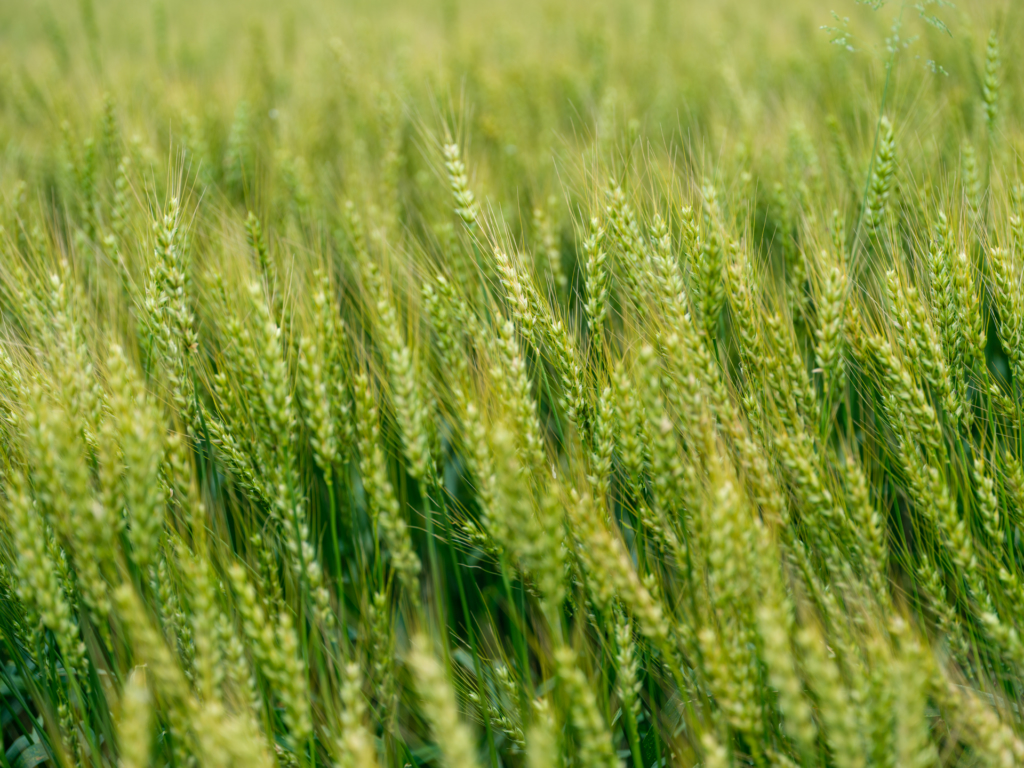
At first, Mr. Tanaka was only thinking of wholesaling to Mr. Idei. But the bread that he baked was so delicious that I knew I had to make it available to everyone,” he says. I thought, ‘I have to feed this to everyone.
The cultivation of locally grown wheat, which began at Kishida Farm, gradually spread. Today, Oyama Komugi boasts an annual harvest of about 250 tons, and it is even used in school lunches in Tottori Prefecture, a project that has grown to involve the entire prefecture.
It is now commonplace for local bakers to use wheat grown in Tottori Prefecture. It will be possible for any artisan or farmer who says, “I want to make Oyama komugi myself.
Determined not to keep their skills and knowledge to themselves, they decided to create a culture of Oyama komugi, and the number of friends who shared their desire to do so increased. He said, “Now we have friends, and more bakeries and restaurants are using our products. The area of Oyama komugi has been growing rapidly, and the whole area around it has become a wheat field. He is looking ahead to the future and hopes that his wheat will eventually become the wheat that supports Japan.
So that “milk is Kishida Farm” will become commonplace.

Milk, cheese, and wheat are not all straightforward. It is not easy to provide the same quality every year, as it is affected by various factors such as the weather, the health of the cows, and the training of the staff. Even so, there is a reason why they continue to do what they do.
“I still think it’s the fact that there are no answers.” If we knew, “If we do this, this is how it will turn out,” it probably wouldn’t be interesting. We change the feed and the grass many times, and we keep trying to make it better by trial and error,” says Tanaka.
We are second to none in the process of raising cows and squeezing milk. Because of this pride, we are very particular about the quality of our milk, and we put all of our effort into providing the world with milk that scores 100 points. That is why Mr. Tanaka’s ambition is to have restaurants and confectionery stores use Kishida Farm’s milk.
I believe that if the customers make money, I make money, too, so I have always worked with the hope that when someone opens a restaurant, the first thing they will say when they order milk from Kishida Ranch,” he says. Mr. Tanaka’s challenge to create the one and only such milk continues.



